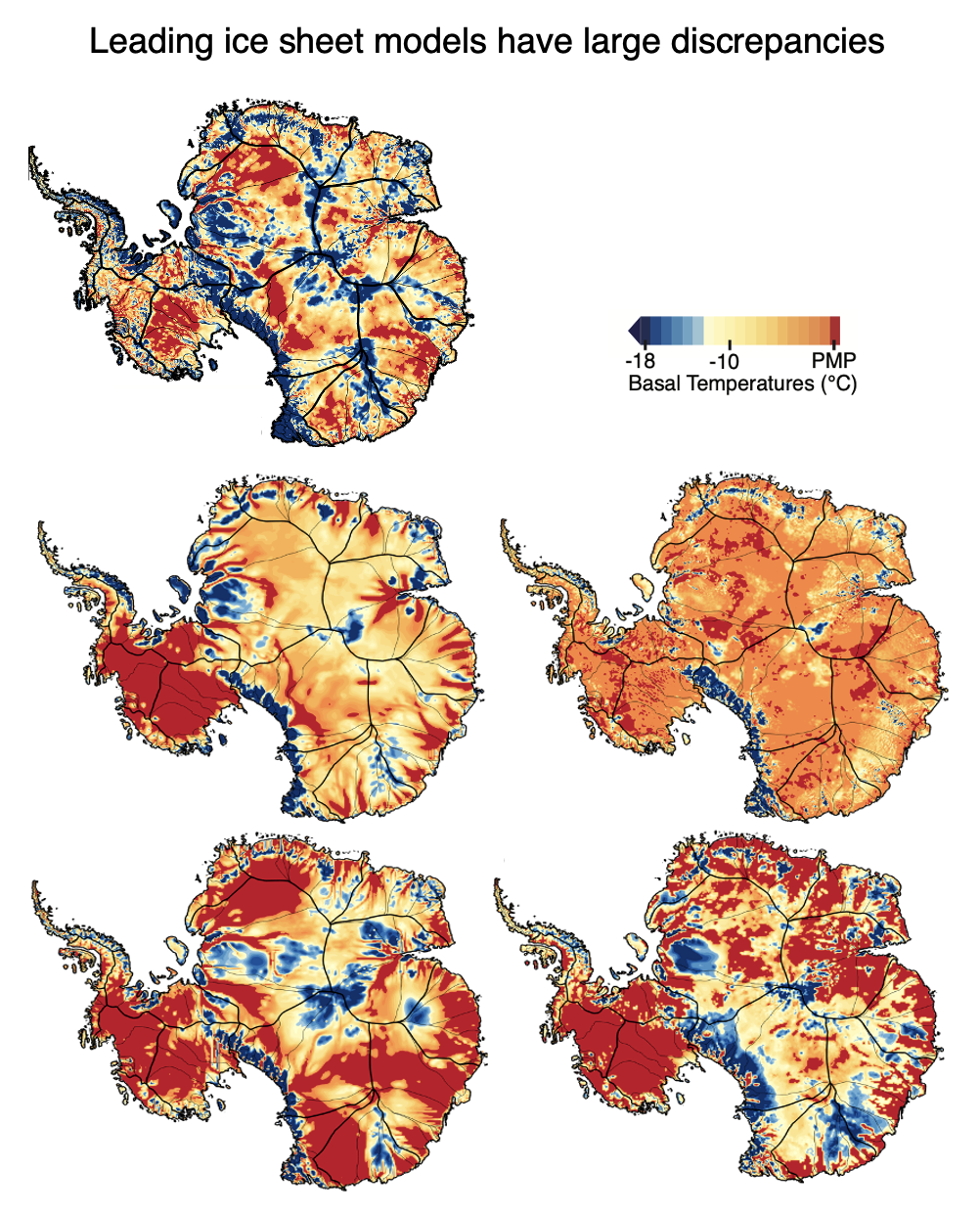Ice Flow Simulations
I specialize in integrating geophysical observations into ice sheet models, using methods such as inverse modeling, data assimilation, and targeted sensitivity analysis to translate measurements into physically meaningful model constraints. This two-way connection is essential: observations are only as powerful as the insight they provide to models, and models are what allow us to project future mass loss, instability, and contributions to sea-level rise. For instance, the basal thermal state has a large influence on ice flow, yet leading ice sheet models give entirely different maps of basal temperature. By coupling radar and other field data with process-based simulations, my work anchors model behavior in observations while also guiding new data collection to the locations that will most improve predictions.
My research in Nature Communications is an example of how targeted modeling experiments can identify which observations will be most valuable for ice flow projections. By testing the sensitivity of Antarctic mass loss to basal thermal state in the Ice-Sheet and Sea-Level System Model (ISSM), I found that in regions where the bed is frozen but close to melting, even a small temperature increase can drastically reduce basal friction, accelerating ice discharge. This study, featured in Stanford Sustainability News, shows how better constraints on basal thermal conditions are key to improving future sea-level rise projections.

